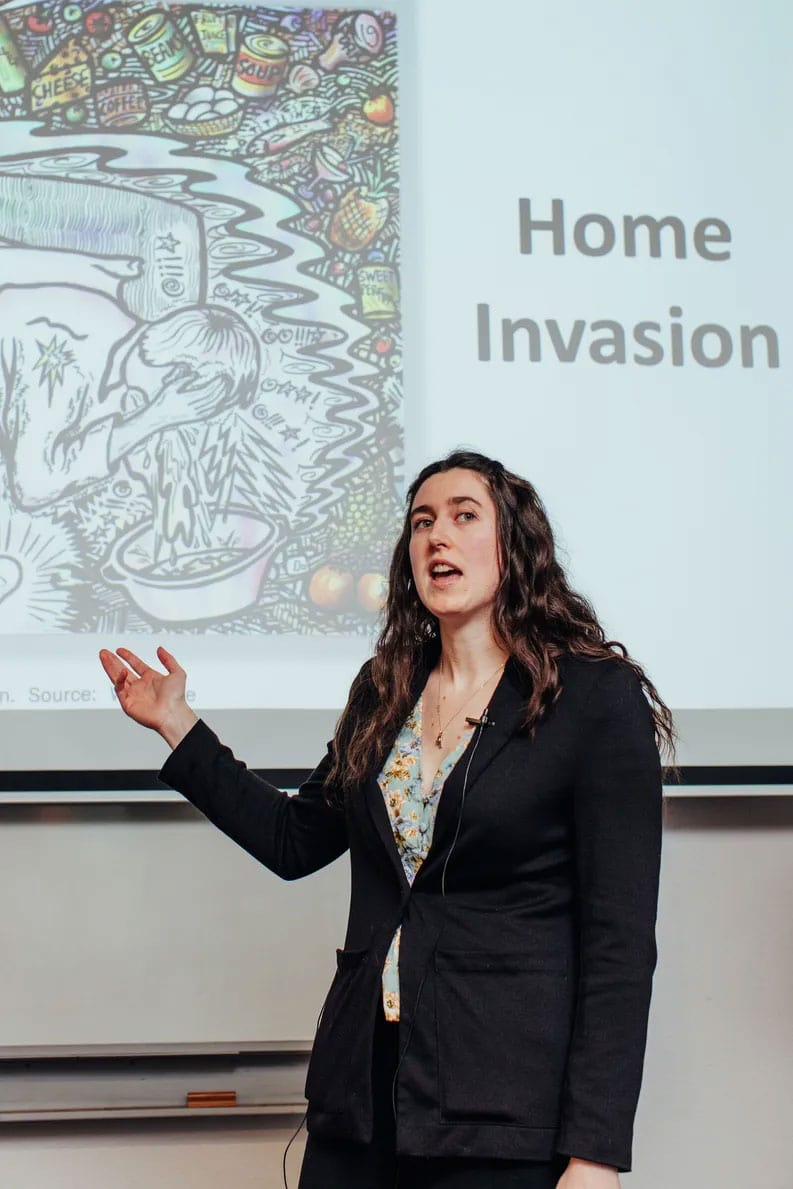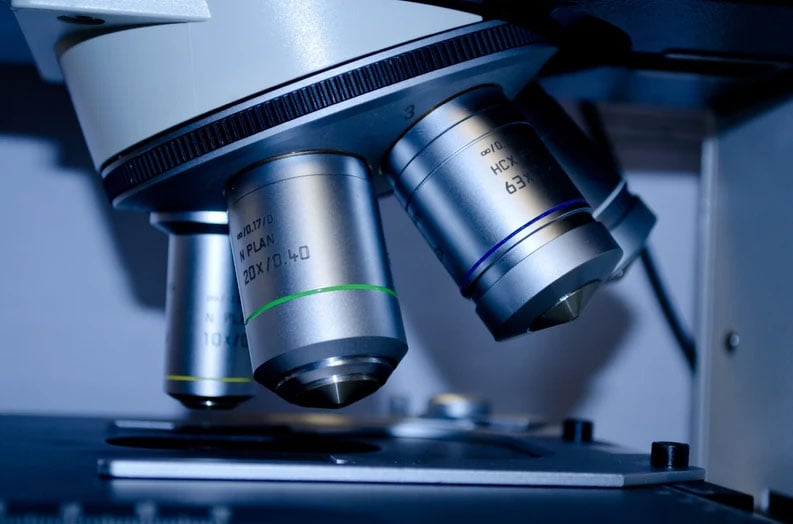By Tyla Alexander
I am a final year PhD student in Professor Debbie Hay’s Laboratory in the Department of Pharmacology and Toxicology at the University of Otago. Recently, I competed in the 3-minute thesis (3MT) competition and won the University of Otago Grand Final. The aim of the competition was for us to present our research to a non-specialist audience in 3 minutes. The challenge was to take a very technical subject and present it in a way that everyone could understand. My research focuses on understanding how new migraine drugs work at the cellular level. I titled the presentation “Home Invasion” because I really wanted to convey the reality that migraine is much more than a bad headache; it feels like a home invasion. Both are very personal and traumatic experiences.
I was able to gain a better understanding of the impact of my research when I attended a migraine support group meeting in Dunedin, and was struck by learning of the huge impact migraine has on people’s lives. The group discussed the migraine drugs that I am researching and how there are still many questions about how they work, which reinforced the importance of my research. Not only do I enjoy the science behind migraine, but I get headaches and have experienced a few migraine attacks myself.

Photo: Tyla presenting at 3MT Grand Final at the University of Otago.
Photo credit: University of Otago
Calcitonin gene-related peptide (CGRP) is a small protein that is a target for migraine treatment. Research has tightly linked CGRP to migraine and this led to the development of drugs that reduce its activity. CGRP acts as a messenger in nerve cells and the CGRP receptor receives these messages and relays this information into the cell. The drugs that act on the CGRP system prevent these messages from being sent, and this can prevent or stop a migraine attack from occurring. But it’s never that straightforward! A complicating factor in understanding how CGRP acts is that there is a second receptor that can receive messages from CGRP, called the AMY₁ receptor.
My research looks at gaining a greater understanding of how the CGRP receptor and AMY₁ receptor function in cells, and how the drugs affect them. My work engineers cells to create these two receptors. I then compare how they behave in the presence of the drugs. With other researchers in my lab group, I recently published research showing that one of the drugs, erenumab (Aimovig), might also block the AMY₁ receptor, even though it was designed to act only at the CGRP receptor. My work continues to look for answers in how these receptors and drugs work, to help understand why some but not all patients benefit from targeting CGRP.
I recently went to the International Headache Congress 2023 in Seoul, South Korea. The work presented at the conference demonstrated that researchers have come a long way in their endeavours to understand migraine but there is still a lot more research needed. More light was shed on the fact that CGRP is not the full picture and that there are other molecules and receptors that could also be important for the treatment of migraine. We are starting to piece together a puzzle of how a migraine attack occurs but there are still many missing pieces.
Congratulation Tyla on your win, and for helping to improve migraine treatments through your research. It’s always exciting to hear of New Zealand migraine research and we wish you the best of luck with your PhD.
Migraine Foundation Aotearoa New Zealand


